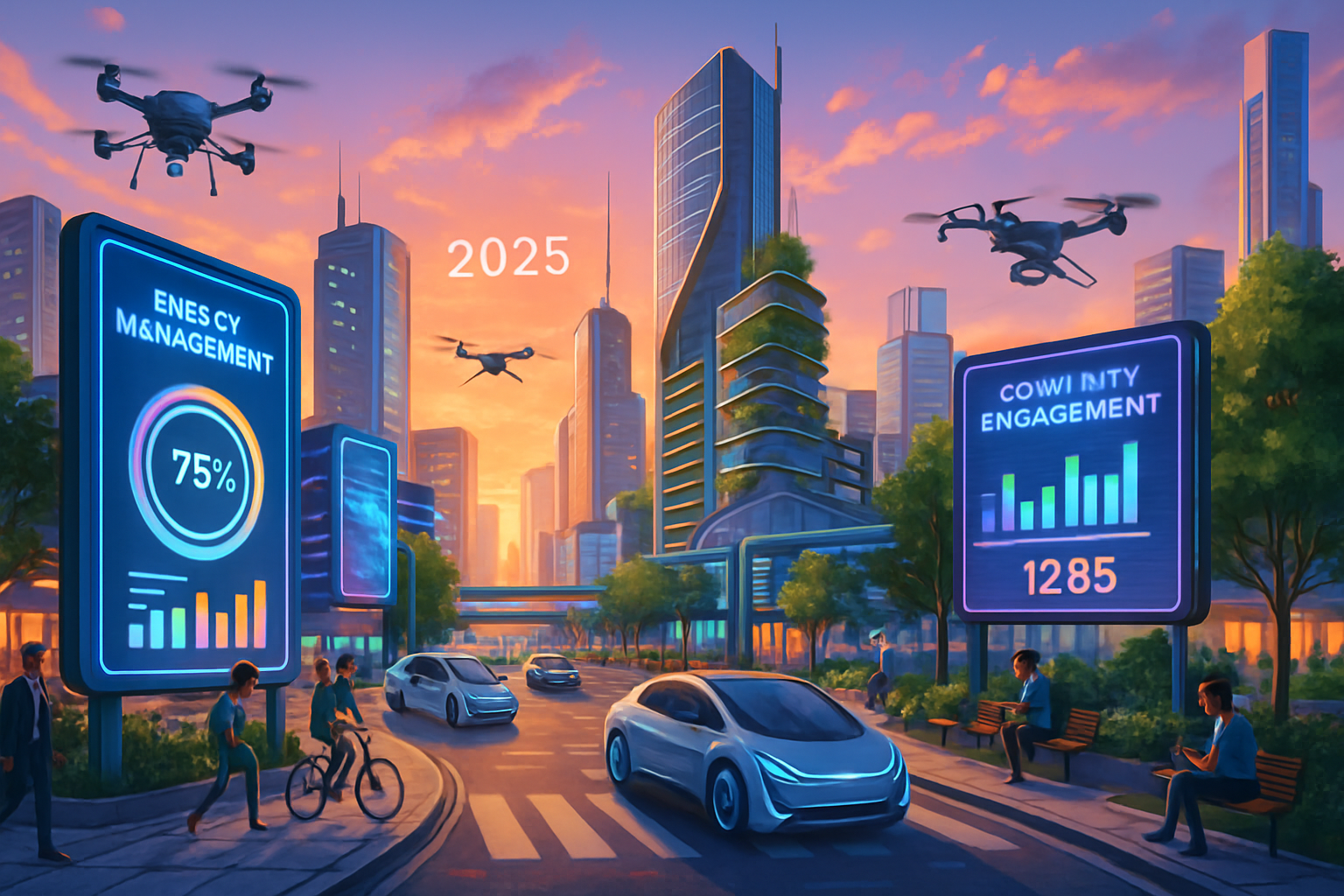Digital Twin Cities: How IoT, AI, and Sustainability Are Creating the Next Urban Revolution in 2025
Step into 2025, where digital twin cities transform urban life by simulating real-world scenarios, enhancing sustainability, and optimizing smart city design. Discover how technology redefines planning and infrastructure, making cities more efficient and resilient.

Welcome to the Age of Digital Twin Cities
Imagine a city with a digital doppelgänger—a living, breathing simulation that mirrors every street, sensor, and citizen interaction in real-time. Welcome to 2025, where digital twin cities are no longer science fiction but the new gold standard for urban innovation. Powered by an army of IoT sensors, AI analytics, and advanced simulation platforms, these digital twins are redefining how we plan, manage, and experience metropolitan life—from energy grids to emergency response, from traffic flow to community engagement.
What Exactly Is a Digital Twin City?
“A digital twin city is a dynamic, virtual replica of a real city—fed by real-time data from IoT sensors and enriched by AI, enabling urban leaders to simulate, predict, and optimize everything from infrastructure to daily life.”
- Real-time Data: Billions of IoT sensors track energy usage, air quality, traffic, water flow, and more.
- AI & Analytics: Machine learning algorithms process data, spot patterns, and recommend actions.
- Simulation: Urban planners run “what-if” scenarios—testing everything from disaster response to new bike lanes—without ever closing a real street.
Think of it as SimCity on steroids, but with real-world consequences (and, thankfully, fewer monster attacks).
Why 2025 Is the Breakout Year for Digital Twin Cities
So why is 2025 the year digital twins have gone from pilot projects to full-blown urban revolutions?
- 5G and Edge Computing: Ultra-fast networks and edge AI mean cities can process sensor data instantly, not in the next mayor’s term.
- Universal IoT Standards: Protocols like Matter and Open Mobility make it easy for devices (and city departments) to talk to each other.
- Sustainability Mandates: Climate change is no longer a “nice to solve” problem—digital twins help cities hit net-zero targets and adapt to extreme weather, fast.
- Affordable Simulation Tools: Platforms from Siemens, Hexagon, Autodesk, and Microsoft Azure have made digital twins accessible to cities of all sizes.
How Digital Twins Are Transforming Urban Life
1. Real-Time Energy Management
Digital twins let cities see their entire energy grid in real-time: where power is flowing, where it’s wasted, and where renewables can be added. AI can automatically balance loads, cut emissions, and even predict blackouts before they happen. Smart buildings and districts optimize their own usage—no more playing thermostat roulette!
2. Disaster Resilience and Response
Floods, fires, earthquakes—oh my! With a digital twin, emergency planners can simulate disasters, test evacuation routes, and coordinate first responders in a virtual environment. When real trouble strikes, AI-powered dashboards guide decision-makers with up-to-the-minute insights, saving lives and resources.
3. Traffic and Urban Mobility Optimization
Fed by live data from vehicles, transit, and pedestrians, digital twins simulate and optimize city-wide mobility. Want to reduce congestion or air pollution? AI recommends tweaks to traffic signals, bus routes, or even curbside delivery zones. The result: smoother commutes, safer streets, and happier citizens (well, except the ones still double-parked).
4. Community Engagement and Transparency
Digital twins aren’t just for planners—they’re for people. Through interactive 3D maps and dashboards, citizens can see how their neighborhoods are evolving, participate in virtual town halls, and even propose improvements. It’s civic engagement with a video game twist (minus the trolls—unless you count that one neighbor who always wants more bike lanes).
Sustainability: The Heartbeat of the Digital Twin Revolution
“Digital twins are the ultimate tool for building greener, more resilient cities—helping planners simulate everything from solar panel placement to stormwater management, all before a single shovel hits the ground.”
- Energy: Simulate and optimize renewable integration, grid resilience, and zero-carbon districts.
- Water: Track leaks, optimize irrigation, and model flood scenarios.
- Air Quality: Pinpoint pollution hotspots and test green urban design solutions.
- Waste: Streamline collection routes and boost recycling rates with real-time feedback loops.
In other words, digital twins give cities the superpower to test, tweak, and turbocharge their sustainability plans—without risking costly mistakes in the real world.
The Tech Stack: Who’s Powering the Digital Twin Boom?
Behind every smart city digital twin is a constellation of tech partners and platforms. Some of the key players in 2025 include:
- Siemens Smart Infrastructure
- Cisco Kinetic for Cities
- Hexagon Digital Twin
- Autodesk Digital Cities
- Microsoft Azure Digital Twins
- Schneider Electric EcoStruxure
These platforms connect everything from traffic lights to wind turbines, making the digital twin city more than just a digital pretty face—it’s a real-time, actionable control room for the metropolis.
Challenges and Future Frontiers
Of course, even the smartest cities still face a few speed bumps:
- Data Privacy: More sensors mean more data—cities must secure citizen information and build public trust.
- Interoperability: Getting hundreds of vendors and legacy systems to play nice is easier said than done.
- Digital Divide: Ensuring all citizens benefit from digital twins—not just the tech-savvy or affluent.
But with open standards, robust governance, and a focus on equity, digital twin cities are poised to become the backbone of sustainable, resilient urban life—globally.
Ready to Shape the Future?
Whether you’re an urban planner, a tech professional, or just a city-loving dreamer, the digital twin revolution is unfolding right outside your door (and inside your phone). Want to stay ahead of the curve? Subscribe to Funaix for free and become a Funaix Insider for smart news, perks, and a front-row seat to the urban future. Only subscribers can comment—so join the conversation and help shape tomorrow’s cities, today. It’s free for now!
Published: August 7, 2025 — Funaix Magazine




